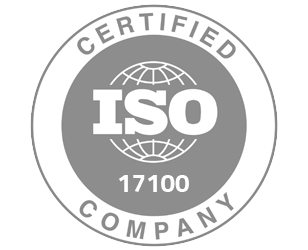
Medical Device Translation: What You Need to Know
Accurate medical device translation is essential for ensuring patient safety, regulatory compliance, and effective healthcare communication. From user manuals and labeling to software interfaces and technical documentation, every aspect of a medical device must be clearly understood by healthcare professionals and patients alike. Even minor translation errors can lead to serious consequences, including misinterpretation of instructions, incorrect usage, or regulatory non-compliance. This blog explores the key aspects of medical device translation, why it is crucial in the global healthcare industry, and how professional language services help maintain accuracy, consistency, and adherence to international regulations.
Why Medical Device Translation Matters
Medical devices are used across the world in hospitals, clinics, and homes, meaning their instructions, labeling, and user guides must be accessible to speakers of different languages. Precise translation ensures:
- Patient Safety – Misinterpretation of device usage instructions can lead to incorrect operation, potentially harming patients.
- Regulatory Compliance – Medical devices must meet the language requirements set by authorities like the FDA (United States), EMA (Europe), and MDR (Medical Device Regulation in the EU).
- Effective Communication – Healthcare professionals and patients rely on accurate translations to use medical devices correctly and safely.
Key Documents Requiring Medical Device Translation
Medical device manufacturers must translate a range of documents to comply with international standards. Some of the most critical include:
1. User Manuals and Instructions for Use (IFU) – These documents guide healthcare professionals and patients on the correct usage of medical devices.
2. Regulatory Documents – Includes submissions for device approval, such as clinical trial reports and compliance documentation.
3. Product Labeling and Packaging – All safety warnings, usage labels, and instructions must be correctly translated to meet local regulations.
4. Software and UI Localization – Many medical devices contain digital interfaces that require accurate translation and adaptation to different languages.
5. Marketing and Educational Materials – Brochures, websites, and promotional content also need precise translation to reach international markets.
Challenges in Medical Device Translation
- Complex Medical Terminology: Medical terminology is highly specialized, and incorrect translation can lead to severe misinterpretations. Translators must have expertise in both medical science and technical language.
- Regulatory Variations Across Countries: Different countries have strict regulatory requirements regarding medical device documentation. For example, The EU Medical Device Regulation (MDR) mandates translation into all official EU languages, The FDA requires all labeling and instructions to be available in English, with translations needed for specific markets.
- Accuracy and Consistency: Medical device terminology must remain consistent across all documents. Terminology management tools and translation glossaries help maintain uniformity.
- Localization Beyond Translation: In addition to translating text, localization ensures that measurements, date formats, and cultural nuances are appropriately adapted for the target market.
Best Practices for Medical Device Translation
To ensure high-quality and compliant translations, medical device manufacturers should follow these best practices:
- Work with Specialized Medical Translators: Medical device translation requires professionals with expertise in both medicine and linguistics. Native-speaking translators with experience in regulatory compliance ensure accurate and precise translations.
- Use Translation Memory and Terminology Management: Computer-assisted translation (CAT) tools help maintain consistency by storing previously translated terms and phrases. This is crucial for medical device documents that require uniform terminology.
- Conduct Rigorous Quality Assurance (QA): All translated content should undergo multiple rounds of review, including Linguistic validation to ensure clarity and accuracy, Regulatory compliance checks to meet country-specific requirements, and Back translation (retranslating into the source language) to verify accuracy.
- Ensure Compliance with Local Regulations: Before entering a new market, companies must research and comply with the regulatory requirements of the target country. This includes adhering to language laws, document formatting, and submission guidelines.
- Partner with a Professional Translation Service: Reliable language service providers (LSPs) specializing in medical device translation offer industry expertise, regulatory knowledge, and quality assurance measures to ensure compliance and accuracy.
PoliLingua: Accuracy and Compliance in Medical Device Translation
At PoliLingua, we specialize in medical device translation services, ensuring accuracy, regulatory compliance, and patient safety in every project. Our team of certified medical translators and industry experts is well-versed in medical terminology translation, adhering to the strict requirements of global health authorities such as the FDA, MDR, and EMA. Whether translating medical device documentation, product labeling, user manuals, or software interfaces, we maintain precision, consistency, and compliance with international standards. By leveraging advanced translation tools, terminology management systems, and rigorous quality assurance processes, we help medical device manufacturers communicate effectively across languages while ensuring safe and clear usage for healthcare professionals and patients worldwide.







